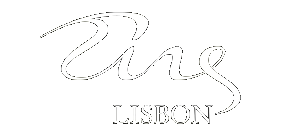
Think about this when you stroll along the riverside towards Belem
One of our personal favourite ways to spend a Sunday is strolling along the River Tejo from Alfarma towards Belem. Either at the river bank or on the other site of the train rails through Santos, Lapa, Alcantara and all the other ‘riverside’ parts of Lisbon. Parts that reminds people about Lisbon’s past – the city’s exploration heydays… names, food, museums, people.
Boyd Tonkin obviously got the vibe when he walked from down town towards the new MAAT Museum, which is the real story behind yesterday’s article in The Guardian.

On the waterfront: Lisbon’s riverside regeneration
]]>Everyone in Lisbon says that, since Portugal’s great age of exploration, the city has looked far out to sea. It took a hand-written list of pratos de dia outside a little restaurant on the Rua das Janelas Verdes – Street of Green Shutters – to add spice to that truism for me. Today’s specials? “Tandoori chicken €6.50, pork saag €6.50, chicken dansak €6.50, pork biryani €5.50”. The pork dishes tell the story on a plate. In 1497, Vasco da Gama’s first expedition to the Malabar coast inaugurated Portugal’s brief heyday as a maritime superpower and began an affair with India (above all in Goa, Portuguese until 1961) that persists until now. António Costa, Portugal’s prime minister, comes from a part-Indian family that still has an ancestral house in the south Goan town of Margao. Read Boyd Tonkin’s On the waterfront: Lisbon’s riverside regeneration in The Guardian yesterday
Remember - sharing is caring 🙂
- Click to share on Pinterest (Opens in new window)
- Click to share on Facebook (Opens in new window)
- Click to share on LinkedIn (Opens in new window)
- Click to share on Reddit (Opens in new window)
- Click to share on Twitter (Opens in new window)
- Click to share on Telegram (Opens in new window)
- Click to share on WhatsApp (Opens in new window)
- More
